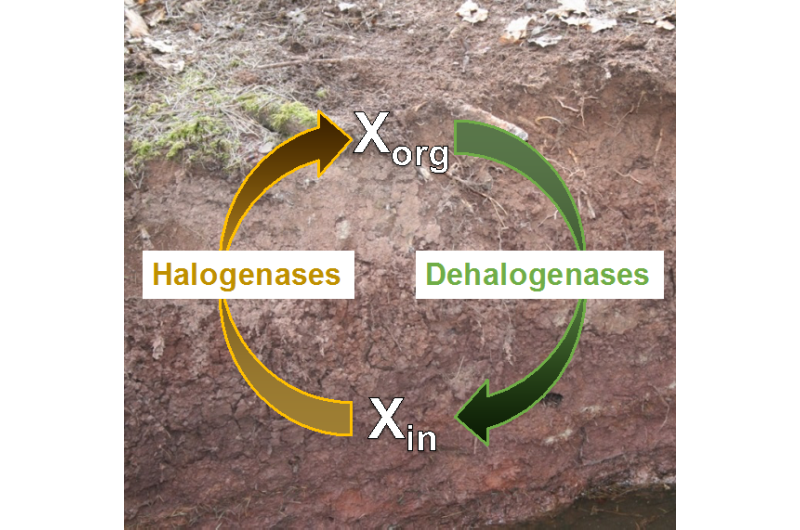Geomicrobiologists show that many bacteria and fungi in soil make organohalogens

Organohalogens like perchloroethene and trichloroethene are prominent groundwater pollutants due to their industrial use as dry cleaning and degreasing agents and their widespread release into the environment. Volatile organohalogens like chloromethane strongly influence atmospheric chemistry and thereby Earth's climate by causing ozone depletion when released into the atmosphere. For a long time it was assumed that these compounds are only produced and released by human activity. However, in recent years, over 5,000 naturally-occurring organohalogen compounds have been identified, and evidence suggests that the cycling of halogens e.g. chlorine, bromine in soils is largely driven by microbial processes.
An international team of researchers led by Professor Andreas Kappler from the Center for Applied Geosciences of the University of Tübingen and Professor Sebastian Behrens now affiliated with the University of Minnesota looked into this in more detail. They sifted through the complete genomic inventory of a pristine forest soil in Tübingen, Germany to uncover the diversity, abundance, and distribution of microorganisms capable of transformation of halogenated organic compounds. The researchers found what they were looking for in bacteria, fungi and archaea, a kind of primal bacteria. They discovered a previously unknown diversity of genes encoding for (de)halogenating enzymes in the soil metagenome. The results of this study have been published in Scientific Reports and could provide important information for the chemistry of the atmosphere, evaluation of earth climate and in bioremediation.
Assumptions that halogens are inert and that most halogenated organic matter in soils is anthropogenic have been challenged by findings of naturally formed organohalogens. "Halogenation and dehalogenation of organic matter are part of the normal cycling in soils," Andreas Kappler says. "These processes are mainly driven by microorganisms." Although specific microbial halogenation reactions have been recognized for decades and the link between the dehalogenation of anthropogenic halogenated contaminants in laboratory cultures and contaminated field sites has been well established, only a few studies specifically looked at pristine ecosystems and the genetic potential for microbial degradation of naturally occurring organohalogens, Kappler says.
In their new study, the researchers did not isolate individual organisms from the forest soil, but analyzed the whole gene pool found in the earth, the metagenome. They identified all genes from bacteria, fungi and archaea coding for halogenating and dehalogenating enzymes. The most common of these genes were similar to those found in the genera Bradyrhizobium, Solibacter, Sphingomonas, Burkholderia, Mycobacterium, Mesorhizobium, and Pseudomonas. "The great abundance of these enzymes and of natural organohalogens, respectively, has an important impact," says Andreas Kappler. "Halogens like chlorine or bromine are added to the water as a tracer for the movement of soil-water. If halogens are present naturally, results could be erroneous." Production of organohalogens by microorganisms has to be taken into account for the study of halogen cycling in atmospheric chemistry as well. "We could take advantage of microbial activity in bioremediation of contaminated soils better than before," says Kappler.
More information: Pascal Weigold et al. A metagenomic-based survey of microbial (de)halogenation potential in a German forest soil, Scientific Reports (2016). DOI: 10.1038/srep28958
Journal information: Scientific Reports
Provided by Universitaet Tübingen



















